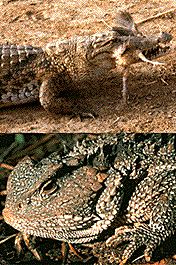Paraphyletic group

A paraphyletic group contains some, but not all, of the descendants from a common ancestor. The members included are those that have changed little from the ancestral state; those that have changed more are excluded: a paraphyletic group contains the rump of conservative descendants from an ancestral species.
By contrast, a monophyletic group is a group which contains all the descendants of a common ancestor: the group has a common ancestor unique to itself. It is the only group recognized by cladistic classification. Monophyletic groups contain all the branches below a given ancestor; nothing is said about the phenetic evolution of species within each branch.
Polyphyletic groups are formed when two lineages convergently evolve similar character states. Organisms classified into the same polyphyletic group share phenetic homoplasies as opposed to homologies. Polyphyletic groups are recognized by pheneticists but not by cladists or evolutionary classifiers.
Reptiles are a paraphyletic group: in terms of appearance a crocodile has more in common with lizards than birds and both crocodiles and lizards are classed as reptiles. However, crocodiles share a more common recent ancestor with birds than with lizards.
| Next |



